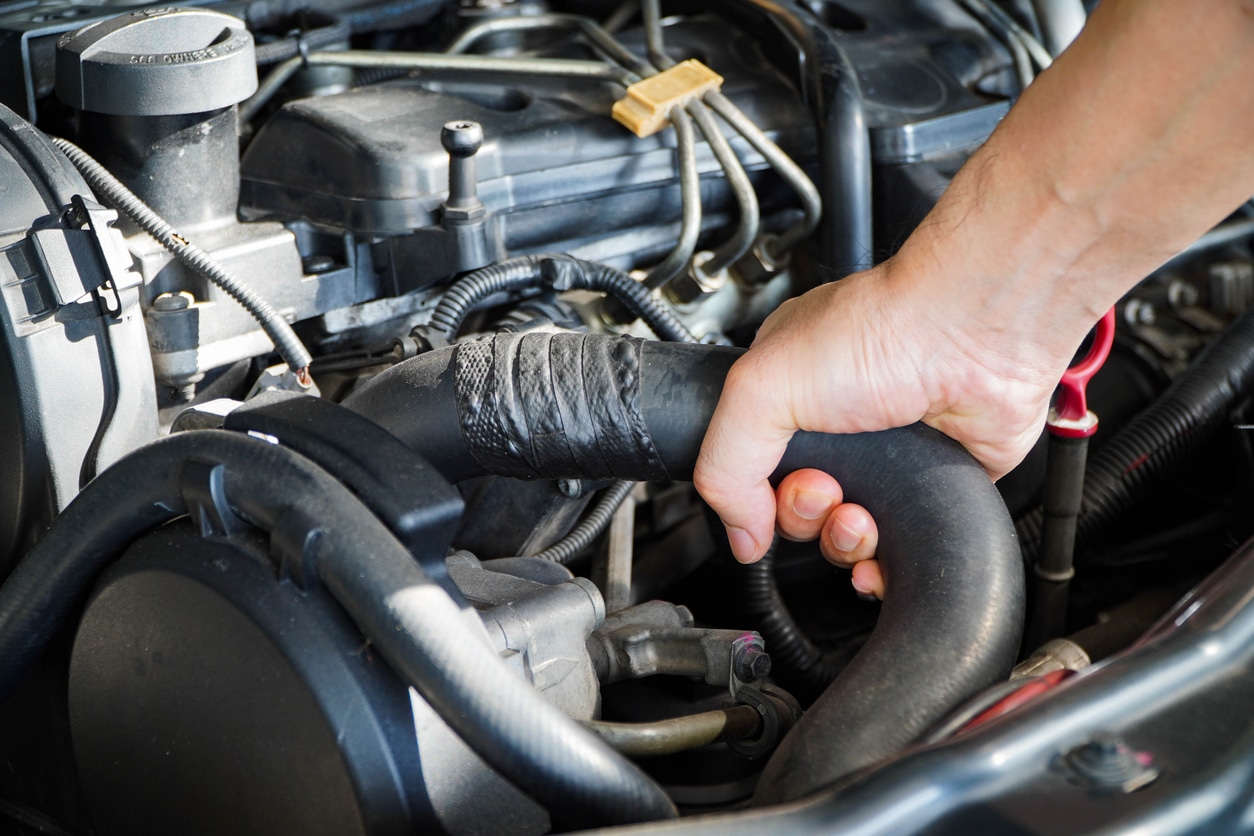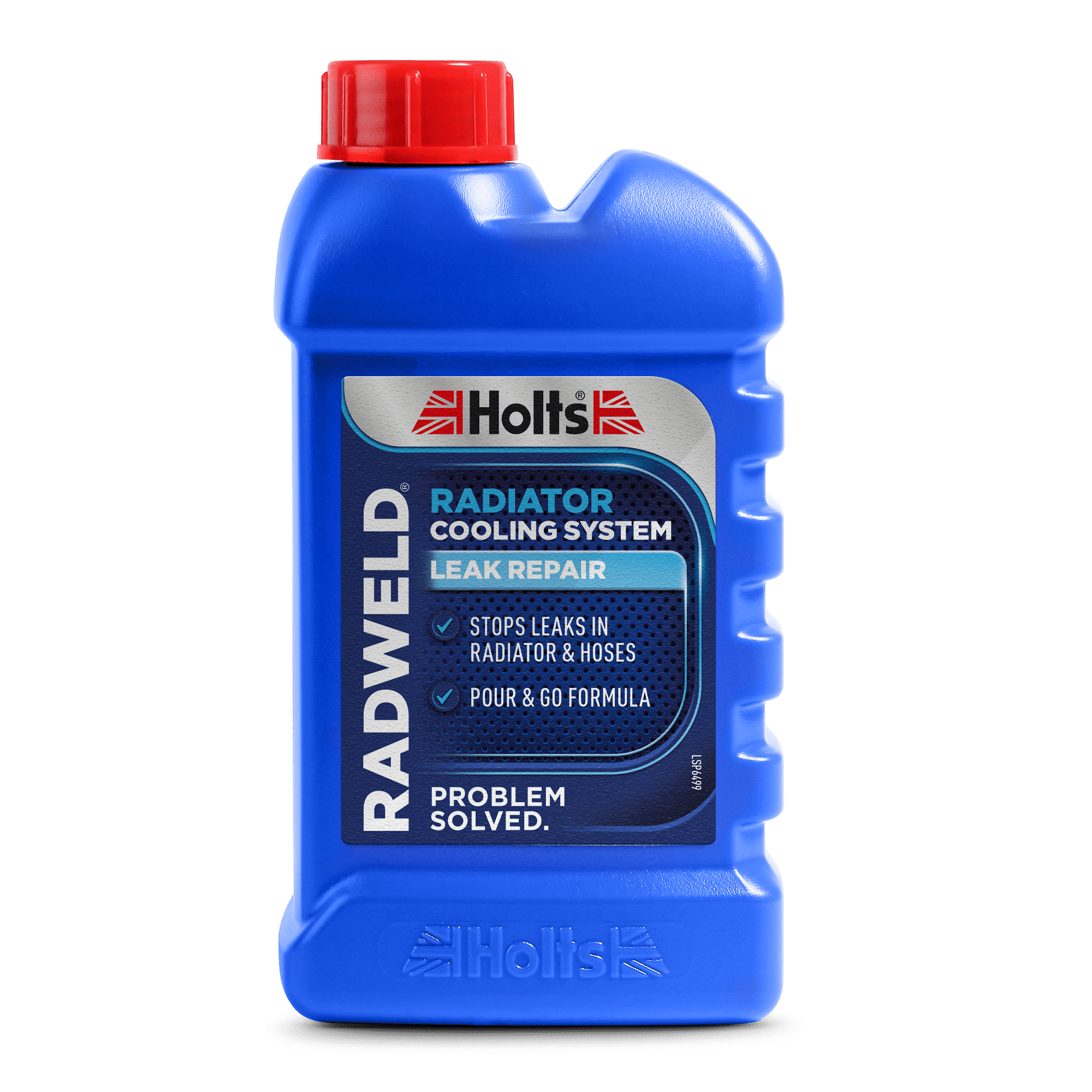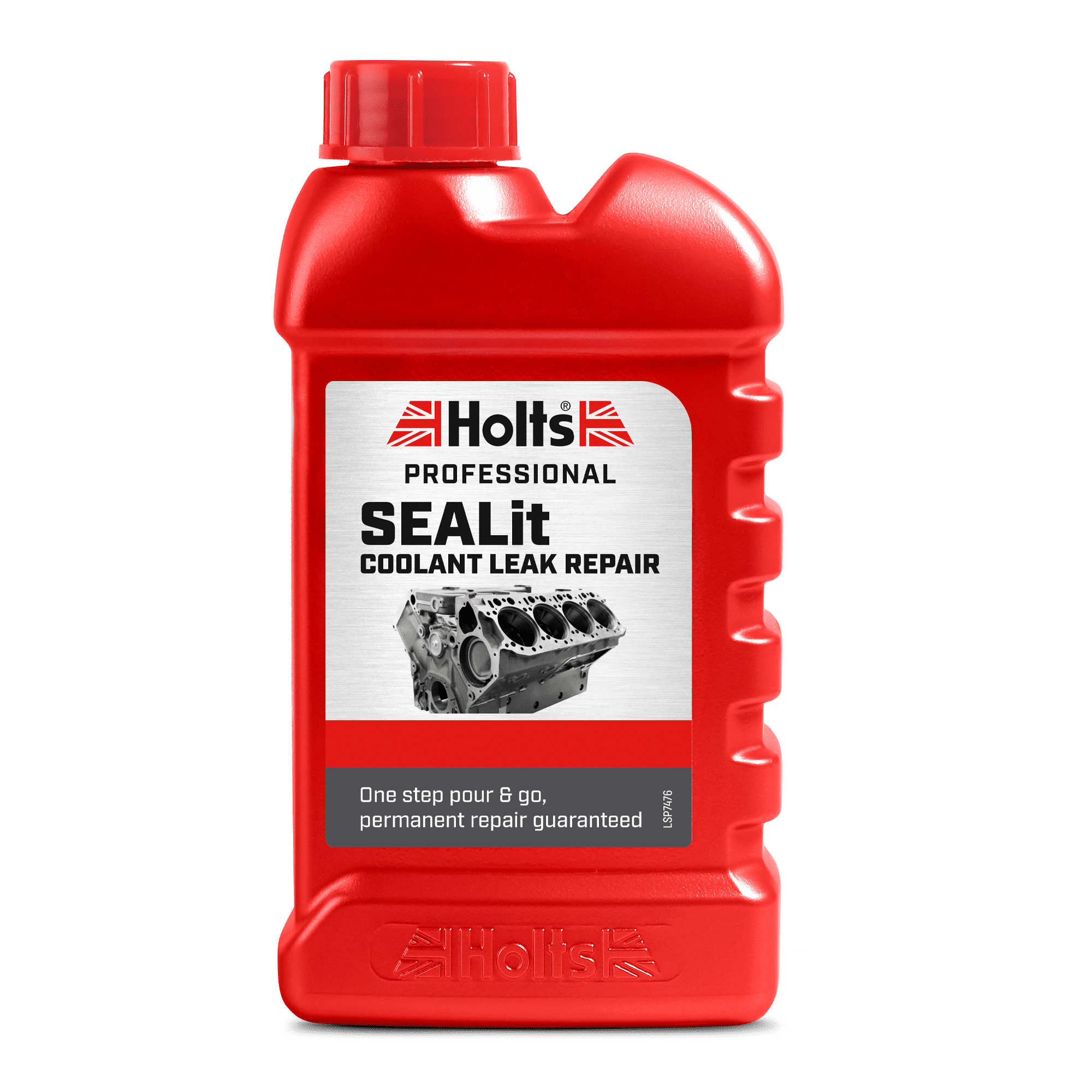Car cooling systems rely on a series of hoses to carry coolant around the engine. Connecting the radiator to the expansion tank, the hoses extend to other components like the heater core and pump, ensuring that all parts of the engine receive a constant supply of coolant/antifreeze.
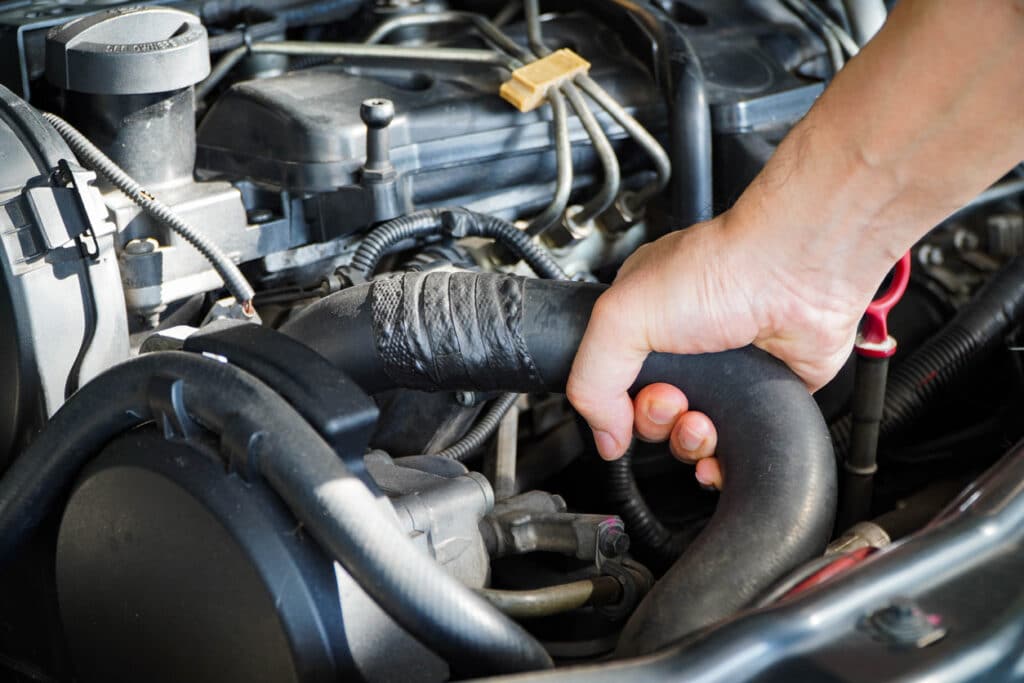
Often referred to as car radiator hoses, these channels comprise of three parts, including a central tube, a layer of reinforcement, and a cover. That might sound like adequate protection but remember that these hoses need to work in a demanding environment where they’re subjected to extreme temperatures and daily wear and tear.
Because of this, problems with car radiator hoses are not uncommon. In fact, if any component of your cooling system was to fail, chances are it would be a hose that went first.
So, what are the symptoms of a faulty radiator hose? How do you repair them? And how long do cooling system hoses typically last? In this guide, we’re covering everything you need to know about car radiator hoses. Use the links below to find what you need or read on for the full guide.
Quick Links
- What are the Signs and Symptoms of a Bad Radiator Hose?
- How Long Do Car Radiator Hoses Last?
- How to Fix a Faulty Car Radiator Hose
What are the Signs and Symptoms of a Bad Radiator Hose?
While modern car radiator hoses hold up much better against daily wear and extreme temperatures than earlier versions, they’re still prone to problems and may develop faults over time. So, to avoid the more serious issues that can come as a result of a faulty radiator hose (including engine overheating), it’s good to know how to spot the signs and symptoms of a bad cooling system hose.
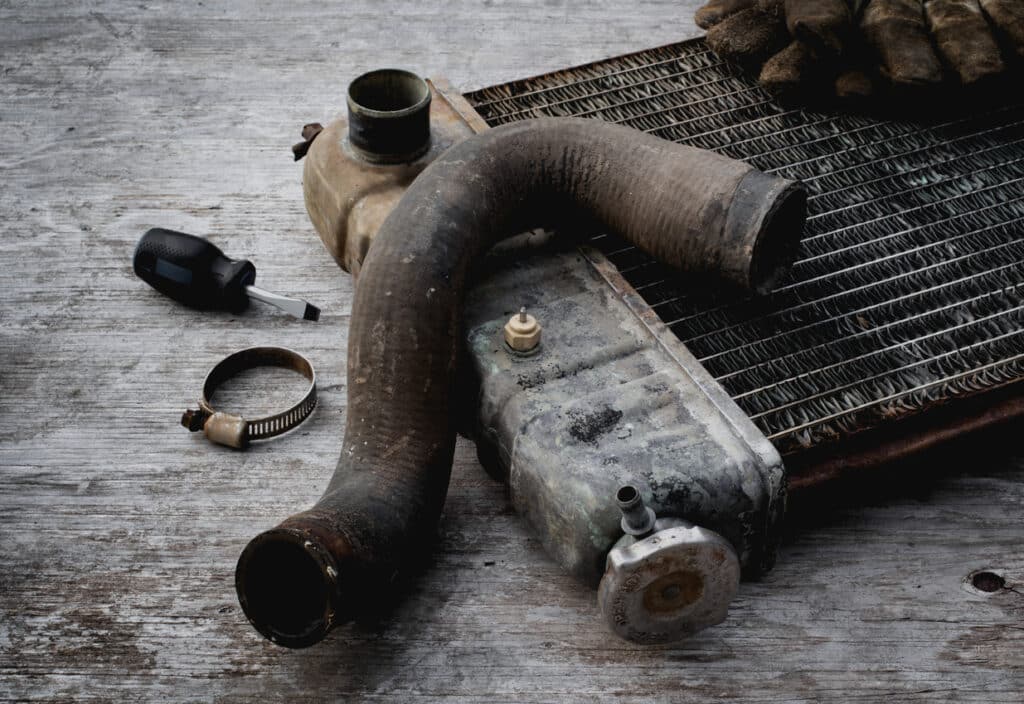
Coolant Leaks
Coolant leaks are one of the most common symptoms of a faulty radiator hose. They happen when the hose either deteriorates due to heat or abrasive damage, or when there’s a problem with the clamps that connect the hose to another component in the engine.
If a radiator hose is leaking, there are a few signs to look for:
- A pool of fluid under the car when it’s been parked
- Small drips of coolant around the engine bay
- Moisture marks on the outside of the hose
- An overheating engine
It’s important to establish the cause of the leak so you know how to fix the problem. For example, if there’s a hole or crack in the hose, you may be able to plug the leak with a product like Radweld. Alternatively, if it’s leaking due to a bad connection, it may be a case of replacing the clamp rather than fixing the hose.
Heat Damage
Although radiator hoses are designed to hold up against high temperatures, they can degrade if they’re in contact with hot components or if the coolant is ill-maintained and not dissipating engine heat as it should. The signs of heat damage to look for on your car’s radiator hoses are a hardened finish, usually on one side of the pipe, which can lead to cracking and degradation if left untreated.
Electrochemical Degradation (ECD)
If your car’s radiator hoses are leaking because of a bad connection, it may be due to a process called electrochemical degradation (ECD). This happens through a process whereby metals within the cooling system create an electrical charge, which is passed through the system via the coolant.
The electrical charge caused by ECD can degrade radiator hoses over time, causing internal cracks which can weaken them from the inside out. These problems generally occur close to metal clamping points; a tell-tale sign is a hose that feels soft or sagging when you grip it.
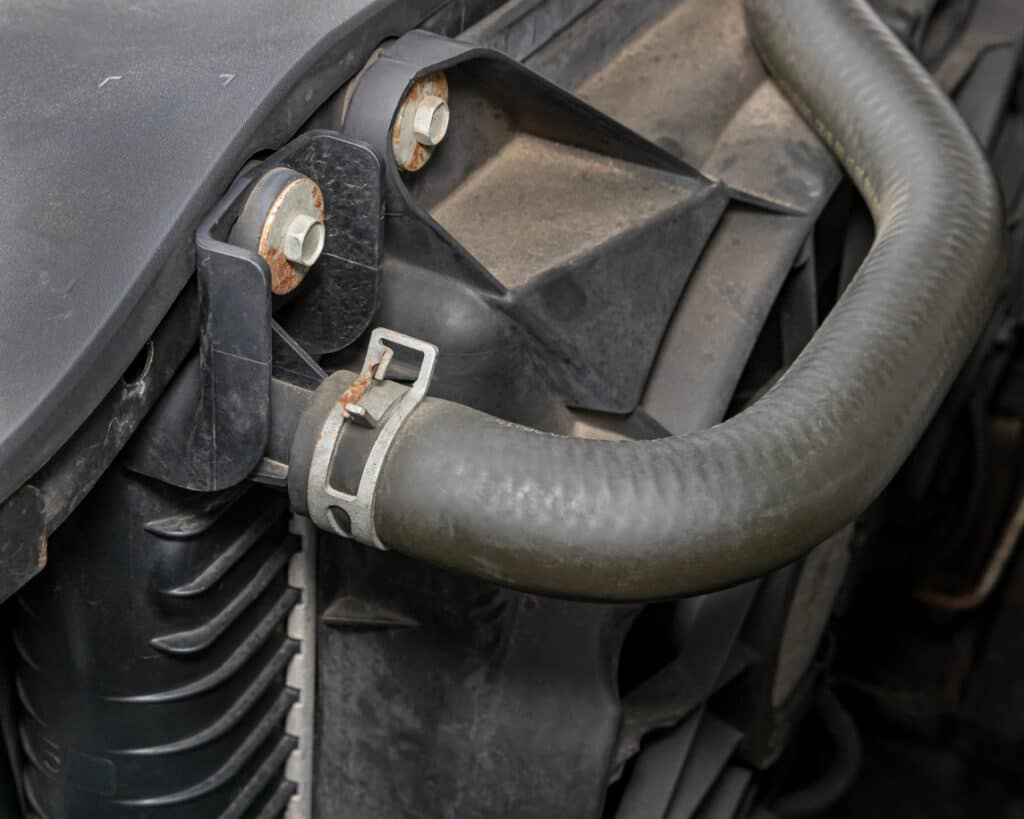
Abrasion
As engines have become smaller and more compact, radiator hoses are now tightly packed into the engine bay. This contributes to the demands placed on the hose material, making it more likely for extreme heat and abrasion to affect its long-term durability.
Abrasion damage is a common symptom of a faulty radiator hose. Caused when the hose rubs against other components, it can lead to holes and cracks forming on the outside of the pipe – meaning a replacement is almost always necessary.
To prevent this problem, it’s advisable to route the hoses in such a way that they’re not in contact with any hot or sharp components or edges. If you suspect radiator hose abrasion could be happening under your car’s bonnet, talk to a mechanic who will be able to recommend the best solution.
How Long Do Car Radiator Hoses Last?
Car radiator hoses should last for at least five years in normal operating conditions, based on an average annual mileage of 12,000 miles. Of course, this depends on a range of factors, including:
- The age, make and model of car
- How regularly the coolant/antifreeze is drained and changed
- How often the cooling system is serviced
- The overall upkeep and condition of the engine
Five years might not sound like a lot, but the good news is, cooling system hoses are easy and inexpensive to replace. And by changing hoses regularly, you can reduce the risk of more intensive problems that can affect the more complex and expensive components within the cooling system.
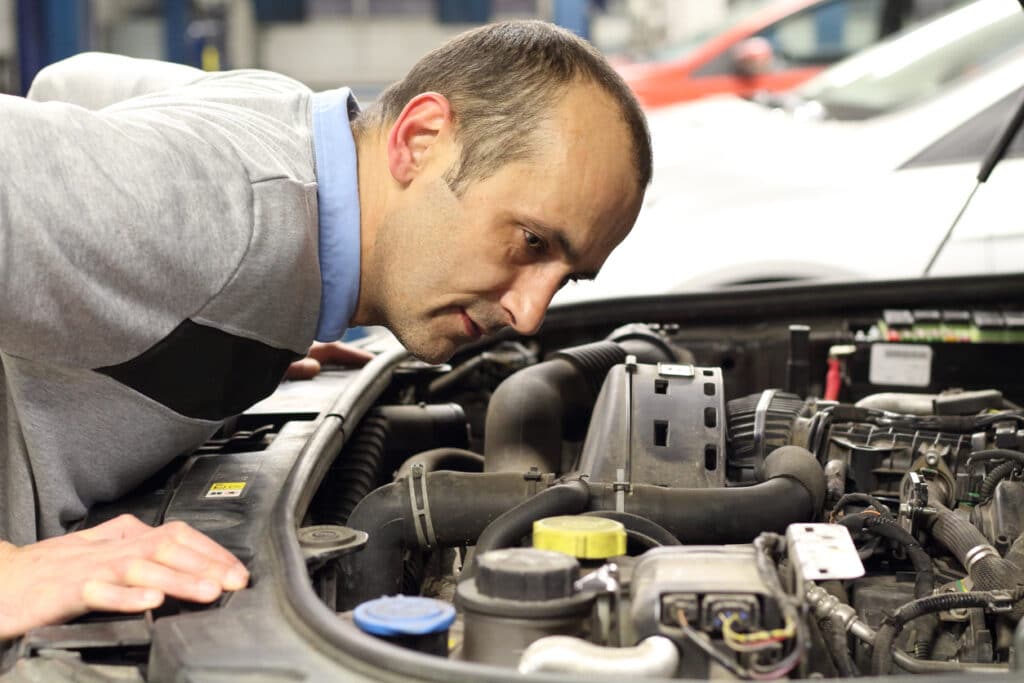
How to Fix a Faulty Car Radiator Hose
Whether you can fix a car radiator hose depends on where and what the problem is. If it’s an internal issue, you may be able to fix the hose without replacing it. However, if it’s an external problem or a serious issue, you might not be able to avoid seeking a replacement.
For problems affecting the inside of the radiator hose, we have a handful of radiator repair products that are designed to fix and seal hoses and other components within the cooling system, including Radweld, Radweld Plus, and SEALit. Offering a pour-and-go solution, our radiator repair products provide a DIY way to stop leaks and permanently seal radiator hoses – great for when minor internal issues have caused your pipes to spring a leak.
In cases where hoses have been damaged by abrasion, extreme heat, oil contamination or ECD, you may need to replace the affected hose and make sure the problem is treated at source. For example, if abrasion is to blame, rerouting the pipe can prevent similar problems in the future. Similarly, if extreme heat is the cause, flushing the coolant/antifreeze and topping the system up with a premium product could help to improve the efficacy of heat dissipation in the engine.
Take a look at our range of radiator repair products for a quick and easy way to fix problems with your car’s cooling system, and for more help and advice check out the Holts blog.
